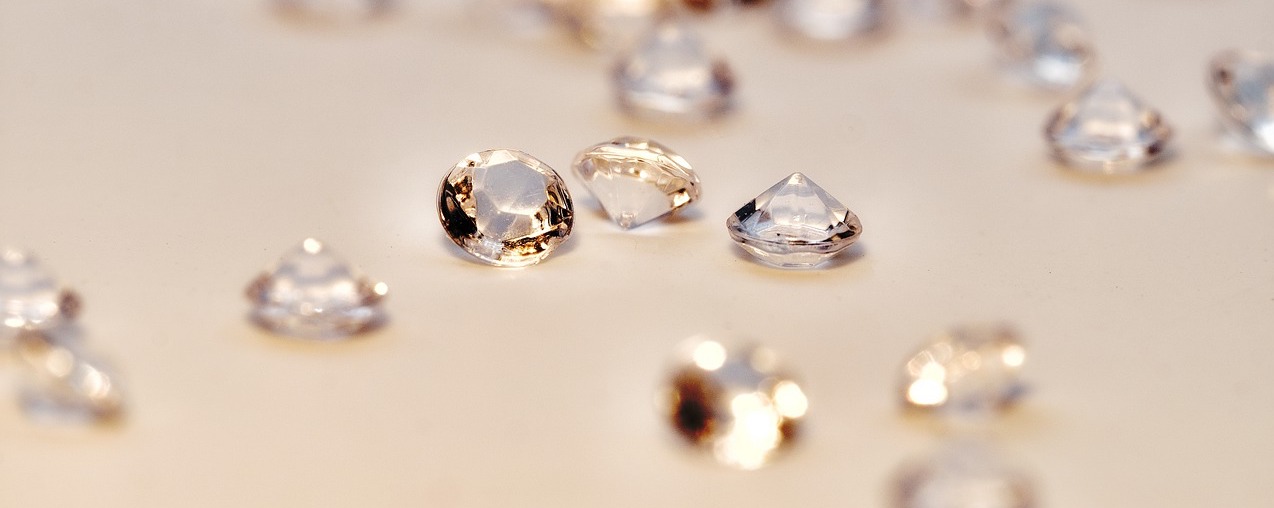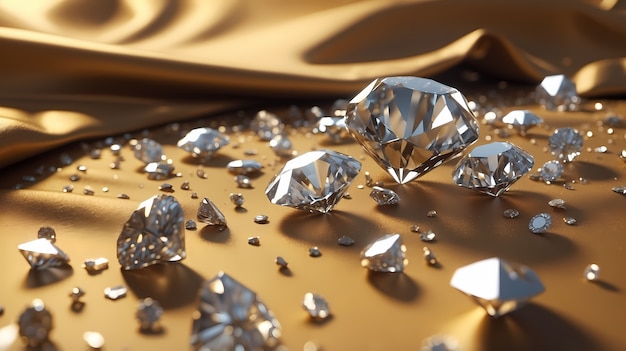
When it comes to choosing a diamond, understanding the 4Cs—Carat, Cut, Color, and Clarity—is essential. These four characteristics play a crucial role in determining the quality and value of a diamond 4cs. So, let’s dive into each aspect to help you make an informed decision!
What Are the 4Cs?
The 4Cs are the international standard for assessing the quality of diamonds. Knowing how each factor contributes can give you a better idea of what you’re looking for in a diamond.
Carat
Carat refers to the weight of the diamond. One carat is equal to 200 milligrams. This measurement impacts the diamond’s size and value; generally, the larger the carat weight, the more expensive the diamond.
Cut
Cut is all about how well the diamond has been shaped and faceted. A well-cut diamond reflects light beautifully, giving it that sought-after sparkle. The cut grade can range from excellent to poor, and it’s one of the most important factors in determining a diamond’s overall appearance.
Color
While diamonds are often thought of as colorless, they can actually come in a variety of hues. The GIA grades diamond color on a scale from D (colorless) to Z (light yellow or brown). Most people prefer diamonds that are near colorless, as they allow for better light reflection.
Clarity
Clarity measures the presence of inclusions (internal flaws) or blemishes (surface flaws) in a diamond. The GIA clarity scale ranges from Flawless (no inclusions visible to a skilled grader) to Included (inclusions visible to the naked eye). Clarity affects not just appearance, but also value.
The Importance of Each C
Understanding why each of the 4Cs matters can help you appreciate the intricacies of diamond quality.
Why Carat Weight Matters
Carat weight is often the first thing people consider when shopping for a diamond. A higher carat weight usually means a more expensive stone. However, it’s essential to balance size with the other Cs to ensure you’re getting the best value for your money.
The Art of the Cut
A diamond’s cut can significantly impact its beauty. A well-cut diamond will sparkle more, while a poorly cut diamond might appear dull, even if it’s large. When comparing diamonds, always prioritize cut to ensure you’re getting a stone that dazzles.
Decoding Diamond Color
While many people prefer colorless diamonds, a slight tint can sometimes enhance a diamond’s warmth and character. Understanding color grading can help you find a diamond that fits your aesthetic preferences while also being a smart investment.
Understanding Clarity Grades
Clarity impacts how a diamond looks under different lighting conditions. A diamond with high clarity will appear more brilliant, while one with visible inclusions may look less appealing. It’s crucial to balance clarity with your budget to find a diamond that meets your needs.
How the 4Cs Impact Diamond Value
Let’s break down how each of the 4Cs influences the value of a diamond.
Price Factors Related to Carat Size
As mentioned earlier, carat weight has a direct correlation with price. But be careful! Jumping from one carat to another can significantly increase the cost. Sometimes, opting for a slightly smaller stone can yield better overall value.
Cut Quality and Its Effect on Sparkle
Cut quality can also have a dramatic impact on price. A diamond with an excellent cut can often be worth more than a larger diamond with a poor cut. This is because the cut influences how well the diamond reflects light, making it appear more vibrant and appealing.
Color vs. Value
When it comes to color, the closer a diamond is to colorless, the higher its value. However, some people prefer a warmer hue, so it’s important to find a balance between personal preference and market value.
Clarity and Perception of Quality
While clarity affects the diamond’s appearance, it’s not always the most critical factor for every buyer. Some may prioritize size or color over clarity. It’s essential to know what you value most when choosing a diamond.
Choosing the Right Balance of 4Cs
Finding the perfect diamond means striking the right balance between the 4Cs.
Finding Your Ideal Combination
Everyone has different preferences. Some might prioritize size (carat) while others lean towards brilliance (cut). Think about what’s most important to you before making a decision.
Prioritizing Based on Personal Preferences
Do you love the sparkle of a well-cut diamond? Or is having a larger stone your top priority? Understanding your preferences will help guide your choice in the 4Cs.
Tips for Shopping Diamonds
Ready to start shopping? Here are some tips to make the process smoother.
Researching Diamonds Online
Before hitting the stores, do some online research. There are plenty of websites that provide information on the 4Cs, as well as comparisons of different lab grown diamonds. Knowledge is power!
Understanding Certification
Always look for certification from reputable organizations like the GIA or AGS. This certification provides assurance that the diamond has been graded accurately based on the 4Cs.
Visiting a Jeweler
When you’re ready, visit a jeweler to see diamonds in person. This allows you to get a feel for different stones and settings, helping you make a more informed decision.
Common Myths About the 4Cs
There are plenty of myths surrounding the 4Cs. Let’s debunk a few.
Myth: Bigger is Always Better
While carat weight is important, bigger isn’t always better. A smaller diamond with an excellent cut can outshine a larger diamond with poor cut quality.
Myth: Color Doesn’t Matter
Some people think color is irrelevant, but it actually plays a significant role in the diamond’s appearance. Even a slight hue can affect how light interacts with the stone.
Myth: All Cuts are Created Equal
Not all cuts are equal in terms of sparkle and brilliance. A well-cut diamond will always outperform a poorly cut one, regardless of size.
Conclusion
Understanding the diamond 4Cs—Carat, Cut, Color, and Clarity—can empower you to make an informed and confident decision when purchasing a diamond. Each “C” contributes to the overall beauty and value of the stone, allowing you to find the perfect piece that aligns with your style and budget. Remember, whether you’re looking for a dazzling engagement ring or a stunning piece for yourself, the right diamond is out there waiting for you! Happy diamond hunting!


